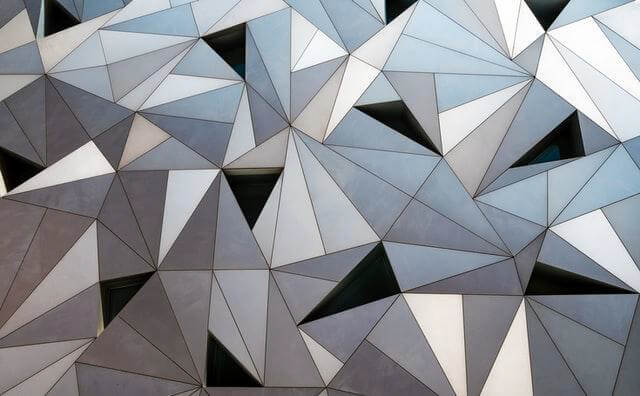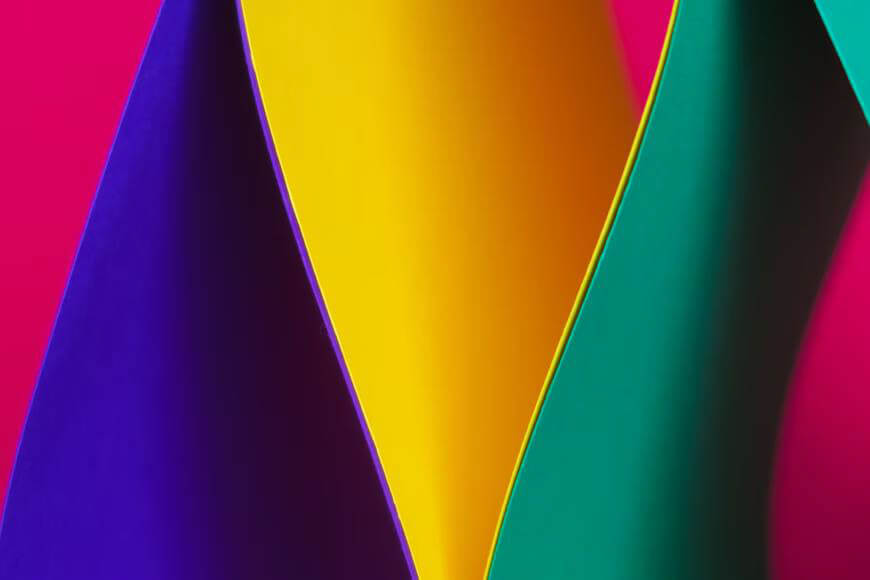Getting to know geometric abstract art

Ben Heine
Geometric abstraction is a kind of abstract art. Geometric abstraction art combines geometric shapes in non-illusionistic spaces into non-objective compositions (non-representations). In geometric abstraction, common shapes and images are repurposed into a cohesive piece that tells a story on its own. Art of this kind is usually non-referential, meaning that it exists independently of external influences.We are naturally inclined to describe and name what we see and experience in the world. As a result, geometric abstract art, with its unrecognizable subjects, colors, and lines, can be challenging. If you agree with this statement, you might find this article helpful in learning more about geometric abstraction.
A Short Overview
Historically, geometric abstraction has appeared in many cultures (e.g., Navajo) as decorative motifs and as art pieces. The Islamic art, which forbade depicting figures, is an essential example of this geometric pattern-based art. Islamic art existed centuries before the movement in Europe and greatly influenced this Western school.
In 1908, artists such as Pablo Picasso and Georges Braque began the cubism movement to break away from the traditional painting style. Using this style as an influence, painters Kasimir Malevich (1878-1935) and Piet Mondrian (1872-1944) pioneered Geometric Abstract art with their distinctive styles (neoplasticism and suprematism).
Additionally, it inspired Theo Van Doesburg to create the De Stijl movement. The geometric abstraction style has continued to influence modern art and trends to this day. To find more about such movements and learn about inspiring painters, visit this geometric art blog.
What are its Characteristics?
Any abstract form of art leaves us with more questions than answers at first glance. While this form of reproducing art from life is not as popular as representational art, it still attracts a wide following among art lovers and the general public alike. Understanding abstract geometric art requires an understanding of its basic characteristics. Let’s take a look.
It is Non-representational
Geometric abstract art uses geometric shapes as images that are not representational. Their appearances are far from their actual appearances. Expression is free, uninhibited, and individual. Consequently, they are in opposition to paintings of the Renaissance model and figurative art.
It is Subjective
As opposed to facts, subjectivity is based on personal opinions and feelings. The same geometric abstract painting may be deemed “beautiful” by one person and “ugly” by another, but neither is right or wrong. As a whole, this form of art is designed to provide viewers with an intangible and emotional experience that can vary greatly depending on one’s mood, with the feeling the piece gives one, and with one’s artistic repertoire at the time.
It Uses Certain Basic Elements
Geometric abstract art uses colors, lines, and shapes as its basic elements.
Geometric abstraction art uses basic geometric shapes. Rectangles are the Original ideal shape because their lines are straight without being ambiguous. In modern geometric abstract art, circles/ovals, quadrilaterals, triangles, and amorphous shapes are created from smooth or sharp lines. The shape is linked to color and linearity in geometric abstract art.

In this art form, linearity is the primary element of contrast, while color is the secondary element. Therefore, the colors of the shapes are distinct, not blended, and are frequently delineated by bold colors. Geometric abstracts initially used only the primary colors of red, green, and blue but later evolved to include more colors to add depth and emotional impact.
Types of Geometric Abstraction
During the 20th century, innovative artists developed geometric abstraction into a prominent style for expressing their understanding of the world. Among them are:
OP Art
Op art is a style of art using only geometric shapes in black and white. Victor Vasarely introduced this style in his painting Zebra. For the viewer, it creates the illusion of movement.
Minimalism
Minimalism became a wave of art in New York in 1960. To express clarity, the content is reduced to its simplest form without the reference. The Die by Tony Smith is considered one of the most influential works of art of this form.
Suprematism
Kazimir Malevich started the suprematism movement in 1913, as his paintings created a different sensation, also known as synaesthesia. To depict emotions, it mostly used squares and trapezoids on a white background.
Concrete Art
It was coined in 1930 by Theo Van Doesburg as an art form that has no symbolic reference to the world. It was distinguished by its hard edges and frequent use of geometric shapes.
How to Understand and Reflect on Geometric Abstractionism?
To understand each piece in this style, you must turn off your internal critics and stop expecting traditional expressions. Geometric abstract art is like a figure of speech – you say one thing but mean something quite different. In this art form, hidden meanings, analogies, protests, and deliberate simplifications prove that everything complex is simple. The painting may be about the process itself, the artist may be using symbolism, or the artist may be simplifying something visible to its abstract essence. Understanding it is a skill and a technique that you can acquire with practice.
It is very valuable to be familiar with an artist’s entire body of work – their oeuvre. Take a look at different pictures and reflect on them. Analyze how the artist felt at each stage of their development. Examine how his feelings affected his artistic expression.
Knowing what paintings came before the one you are seeing helps in making sense of it. Knowing the history relevant to an artist helps in better understanding and reflecting on their painting since every artist is also a product of the culture and period in which they live.
A tip to remember is that good work is emphasized by its textures, both visual and physical. The combination of dimension, layering, thick impastos, and skilled brushwork makes for stunning and visually alluring work. All of these must evoke an emotion in the viewer to make the piece successful.
The Final Words
You may have previously found geometric abstract art difficult to understand. Hopefully, this article has changed your mind. Now go explore and enjoy geometric abstract art!
Ben Heine is a multidisciplinary content creator, marketing expert and world famous artist. His artworks have been exhibited and auctioned in famous museums and art galleries as well as published in newspapers worldwide. Ben also has a Master degree in Journalism and 20 years of experience in marketing, communication, copywriting, storytelling, visual art and video. He is the inventor of Pencil Vs Camera, Digital Circlism, among other series and the founder of CulturArt. He is specialized in content creation, art, photo, drawing, video, marketing and music.
Location
Brussels, 1000, Belgium




